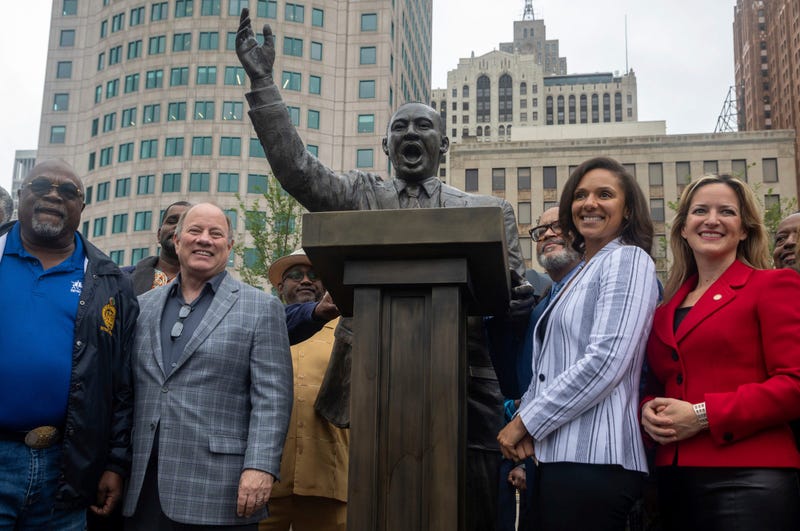
DETROIT (WWJ) – Detroit City Council members are considering a proposal to rename Hart Plaza in Downtown Detroit in honor of Dr. Martin Luther King.
While the proposal was discussed Tuesday, any further discussion has been tabled until after Labor Day. Councilmember Mary Waters had initially explored the idea of changing the name to “Dr. Martin Luther King Jr. Plaza,” doing away with the name of Sen. Phil Hart -- who was a strong support of the Civil Rights Movement.
But the resolution has now been updated to call for naming it “Hart/King Plaza,” according to a report from The Detroit Free Press, after council members heard public comment, including from Sam Riddle, political director of the Michigan Chapter of the National Action Network.
"I personally knew Phil Hart. I personally do feel Hart was a good man. Without Sen. Hart, there would have been no Voting Rights Act of 1965," Riddle said. "There is no American city better than Detroit to have and maintain Hart Plaza as a name."
Earlier this summer the city unveiled a statue of King at the plaza, where he first delivered his famous “I Have a Dream” speech at the Detroit Walk To Freedom in 1963.
The resolution is moving to the Council's Neighborhood and Community Services Committee this Thursday for further discussion.
While the discussion over the name of the plaza continues, on a new Daily J podcast WWJ’s Zach Clark took a look at just what makes Hart Plaza so special to the city of Detroit.
“Hart Plaza is part of Detroit’s origin story. The site sits roughly where Antoine Cadillac first landed in 1701. So that site has been significant for over three centuries now,” Clark said.
From concerts and festivals like Hoedown and Movement, to a growing collection of public art in the plaza, he learned the space was designed to be a gathering place for the city.
“There’s nothing like a big, spectacular piece of sculpture – especially an interactive one like the fountain – to just get anyone walking by drawn to it,” said design critic Alexandra Lange. “I think the fountain is a great example of the kind of things that a lot of cities were doing in the 1950s and 1960s to try to attract people back downtown.”
Want more of The Daily J? Just text WWJ to 20357 to get the podcast delivered to your phone or tablet for free, every Monday-Friday. And be sure to subscribe. Msg and data rates apply. Or, just search for The Daily J and subscribe wherever you get your podcasts.

